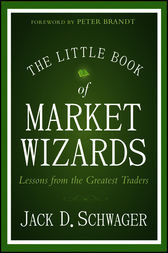 One of intelligent honest things that Livermore did was to get out of one market by selling a related market, inducing the other traders to think that there was weakness in one market which would carry over to the related market. The art of indirection and letting people use their own intelligence and inferences to come to their own conclusion. for example if he wanted to get out of cotton, he’d sell some coffee. If he wanted to get out of a common, he’s sell the preferred or a related company that owned a big chunk of it, like sell Christiana which owned general motors et al. This technique one wonders how often is it used today. When it happens, is it artful indirection or chance? How to quantify and what predictions to be made? Would the robots be smart enough to do this?
One of intelligent honest things that Livermore did was to get out of one market by selling a related market, inducing the other traders to think that there was weakness in one market which would carry over to the related market. The art of indirection and letting people use their own intelligence and inferences to come to their own conclusion. for example if he wanted to get out of cotton, he’d sell some coffee. If he wanted to get out of a common, he’s sell the preferred or a related company that owned a big chunk of it, like sell Christiana which owned general motors et al. This technique one wonders how often is it used today. When it happens, is it artful indirection or chance? How to quantify and what predictions to be made? Would the robots be smart enough to do this?
There was a moment in late 80s Energy trading, when legend has it that a great admirer of Livermore who runs a venerable hedge fund near New York was Bearish to the tune of 40,000 lots. If you think it’s not much, just remember that Exchange limit for open speculative position in any contract was 6,000. Of course, his positions were in all possible inter-month spreads and across products. So once decision to cover was made, he picked up the phone and asked for the cockiest trader in the Crude pit. “Are you a man or mouse?” Trader thought it was a prank: “Come on Paul, what do you want?” “I’ll give an order to sell 1,000 market, and I mean worst. But if I don’t see Crude print through even– they’re all yours! Do you accept?”




